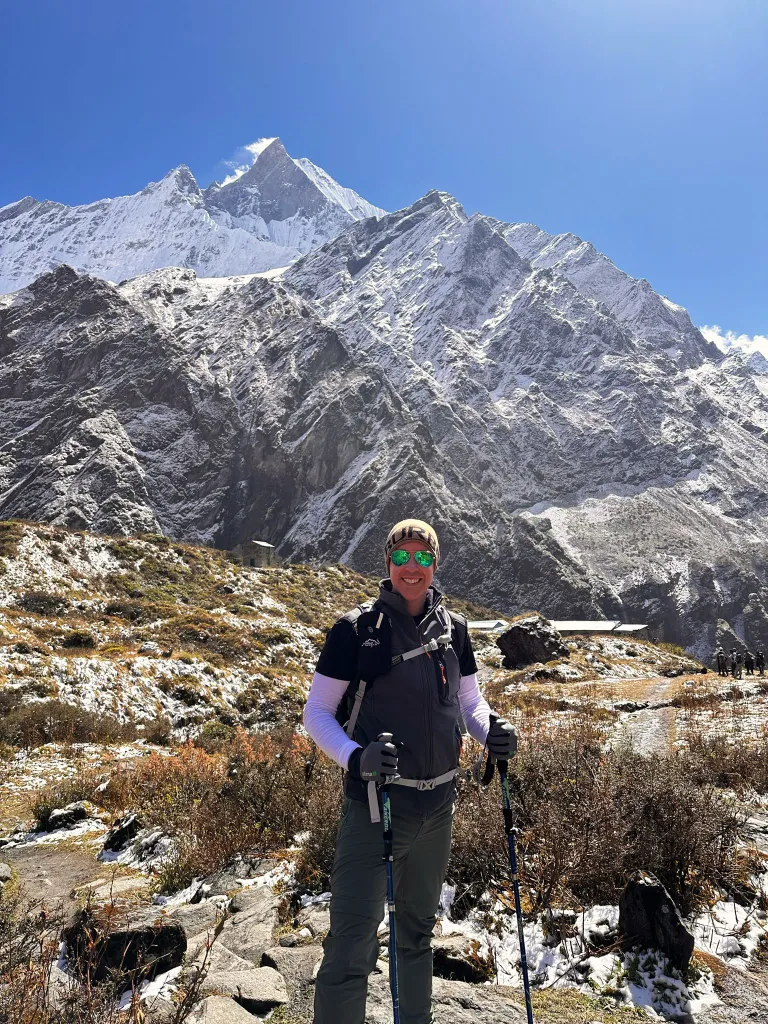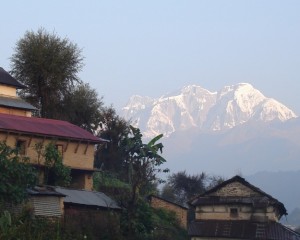Ruby Valley Trek in Nepal: A Guide
Are you ready to embark on the adventure of a lifetime? Ruby Valley Trek, is an off-the-beaten-path gem in the Ganesh Himal region of Nepal.
It is located in this lesser-known corner, and the trek offers a unique experience, unveiling diverse landscapes and climates.
Meanwhile, it is named after the precious stone found in the area, the Ruby Valley Trek spans 8 to 12 days.
It is a perfect blend of challenge and reward for trekkers. It's an opportunity to explore remote Nepal, where the journey itself becomes as significant as the breathtaking destinations along the way.
Whether you're a seasoned trekker or an adventurer, the Ruby Valley Trek promises an unforgettable experience in the heart of the Himalayas.
Ruby Valley Trek Geography and Scenery
The Ruby Valley Trek is a journey that unfolds against a backdrop of a diverse and captivating landscape. Likewise, it ensures a truly enriching experience for trekkers as you traverse the trail, the scenery transforms smoothly.
It leads you through expansive farmlands, verdant meadows adorned with vibrant flora, and rugged, challenging rocky hills.
Diversified landscape
The Ruby Valley Trek is like a beautiful painting with different landscapes. As trekkers walk, they encounter farmlands, green meadows, and rocky hills.
The scenery changes as they go through dense forests with rhododendrons, pine, oak, and bamboo. The trail runs alongside rivers with suspension bridges, gorges, waterfalls, and old stone mills.
Every step reveals new and breathtaking views. The climate also changes along the route, from cool air in the high areas to milder weather in the valleys.
The diverse landscape and weather make the Ruby Valley Trek a visual and sensory adventure for those exploring the natural wonders of the Ganesh Himal region.

Significance of the Ganesh Himal region
The Ganesh Himal region holds importance for the Ruby Valley Trek due to its stunning views. Trekkers get to see the Ganesh Range, Lamjung Himal, Langtang Lirung, Manaslu, and other tall peaks.
These towering peaks provide a stunning backdrop for trekkers, showcasing the raw and awe-inspiring beauty of the Himalayas.
Beyond the visual spectacle, the Ganesh Himal region holds cultural and ecological significance. Trekkers have the opportunity to engage with local communities, such as the Tamang and Gurung ethnic groups, known for their rich cultural traditions.
Likewise, this cultural exchange adds depth and meaning to the journey. Besides, it makes it not just a physical adventure but also a chance to connect with the heritage of the region.
The Ganesh Himal region, therefore, stands as a gateway to a holistic trekking experience. It is the perfect blend of nature, culture, and adventure converge to create lasting memories for those embarking on the Ruby Valley Trek.
Its unique name
The region is named Ruby Valley because there are rubies there, even though people don't mine them a lot.
The Ganesh Himal region is special for the Ruby Valley Trek because it offers amazing views of mountains like the Ganesh Range and Lamjung Himal.
It's called Ruby Valley because there are rubies there, although people don't mine them much.
Itinerary of Ruby Valley Trek
The Ruby Valley Trek is moderately challenging in Nepal's Ganesh Himal region. It offers a mix of beautiful landscapes, cultural experiences, and outdoor adventures.
The trek involves walking through various terrains, including flatlands, terraced farms, and steep climbs. Additionally, it allows you to enjoy breathtaking views of snow-capped mountains like Ganesh Himal, Langtang Lirung, Boudha Himal, and Hiunchuli Dorje Lakpa.
It's best to undertake this trek during spring, summer, or autumn, specifically in the ideal months of January-February and May-June.
Here's a suggested itinerary for the Ruby Valley Trek:
Day 1: Arrive in Kathmandu
Day 2: Explore Kathmandu and Prepare for the Trek
Day 3: Drive to Gatlang
Day 4: Trek to Somdang
Day 5: Trek from Somdang to Tipling via Pangsang La
Day 6: Trek from Tipling to Chalish Gaon
Day 7: Trek from Chalish Gaon to Khading
Day 8: Trek from Khading to Lower Borang
Day 9: Return to Kathmandu

Cost of the Ruby Valley Trek
The cost of the Ruby Valley Trek in Nepal encompasses various factors that contribute to the overall expense of the journey. Trekking packages typically include essential services such as transportation, accommodation in teahouses or lodges, meals, and the assistance of experienced guides and porters.
Permits and Regulations
When undertaking the Ruby Valley Trek in Nepal, acquiring the necessary permits is a fundamental requirement. These permits are crucial not only for ensuring a legal and authorized trekking experience but also for contributing to the conservation efforts in the region.
Trekkers should be aware of the specific permits required for the Ruby Valley Trek, such as the TIMS (Trekkers' Information Management System) card and the Langtang National Park Entry Permit.
The costs associated with these permits vary, and trekkers need to include these fees in their overall budget. You can obtain the required permits, trekkers contribute to sustainable tourism practices and support the preservation of the natural beauty of the Ganesh Himal region.
Transportation Costs
The journey to the starting point of the Ruby Valley Trek involves considerations for transportation expenses. Trekkers have the option to choose between domestic flights and road transportation, each with its associated costs.
Domestic flights offer a quicker and more scenic route but may be subject to weather conditions and availability. On the other hand, road transportation, such as buses or private vehicles, provides a cost-effective alternative.
The choice between these transportation modes can impact the budget, and trekkers should factor in these costs when planning their trekking adventure.
Accommodation Expenses
Accommodation along the Ruby Valley Trek is predominantly provided in teahouses or lodges scattered along the trail. Trekkers must consider the nightly costs of these accommodations when budgeting for the trek.
The prices can vary based on the level of comfort and services offered, ranging from basic lodges with shared facilities to more comfortable teahouses with private rooms.
With the available accommodation options and their associated costs, trekkers can make informed decisions that align with their preferences and budget constraints.
Meals and Food Expenses
A crucial aspect of the trekking budget is the cost of meals and food expenses. Trekkers should budget for daily meals, considering the pricing structure of teahouses along the trail.
While teahouses provide meals, the variety and availability of food items may be limited, and prices can vary.
Trekkers with specific dietary preferences or those desiring additional snacks should factor these considerations into their budget. Adequate planning for meals ensures that trekkers have the necessary energy for the trek during the journey.
Challenges during the Ruby Valley Trek
As with any trek, there are Challenges and Safety considerations to be aware of. Altitude-related concerns. It includes the possibility of altitude sickness and requires proper acclimatization and attention to personal health.
Weather challenges, such as rain, snow, and cold temperatures, necessitate adequate preparation with suitable gear and clothing.
Emergency services and contacts are available along the trail, including medical facilities and rescue services for the safety of trekkers during their journey.
To wrap up, Ruby Valley Trek promises an enriching and well-supported adventure. The trek, set against the backdrop of the Ganesh Himal region, offers a harmonious blend of diverse landscapes, cultural encounters, and awe-inspiring mountain vistas.
The expertise and guidance provided by Nepal Vision Treks contribute to an enjoyable trekking experience, ensuring the safety and comfort of trekkers throughout the journey.

FAQS
- How long does the Ruby Valley Trek typically take?
The trek usually takes around 10 to 12 days to complete.
- What is the starting point of the Ruby Valley Trek?
The trek starts from Syabrubesi.
- Is the Ruby Valley Trek suitable for beginners?
Yes, the trek is considered moderate and is suitable for trekkers with some prior experience.
- When is the best time to do the Ruby Valley Trek?
The best times are spring (March to May) and autumn (September to November).
- What permits are required for the Ruby Valley Trek?
Trekkers need a TIMS card and a Langtang National Park Entry Permit.
- Are meals included in trekking packages?
Yes, meals are typically included in the trekking packages.
- What is the highest point reached during the Ruby Valley Trek?
Kyanjin Gompa, is situated at 3,870 meters.
- What cultural encounters can be expected on the trek?
Trekkers may interact with Tamang and Gurung ethnic groups, known for their rich culture.
- Are there any special features on the Ruby Valley Trek?
Yes, the trek offers natural hot springs and is named after the ruby gemstone found in the region.
- What environmental practices should trekkers follow on the Ruby Valley Trek?
Trekkers are encouraged to follow Leave No Trace principles, minimizing their impact on the environment.






